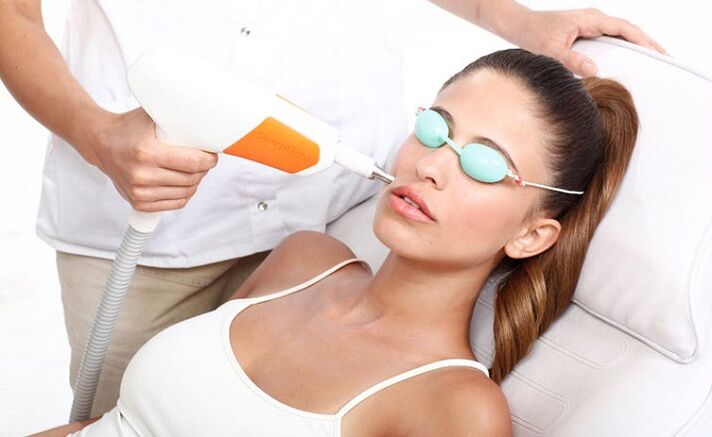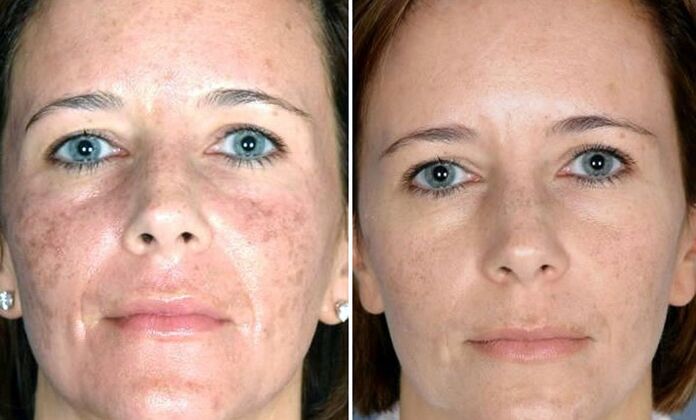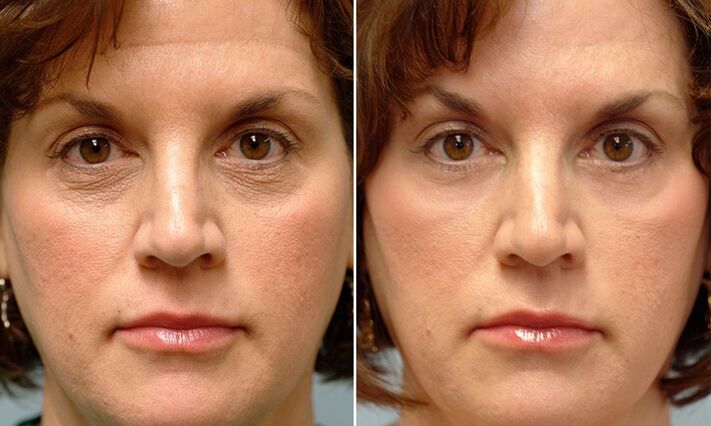From Cleopatra to today, no fair representative is willing to prolong the youth and beauty of the skin. Modern medicine continues to innovate in the field of cosmetology, providing various anti-aging surgical procedures and procedures.
Especially popular technology can make you get rid of the external signs of aging without using a scalpel or botulinum toxin injection. Fractional laser rejuvenation is actually the fastest and safest way to fight skin aging.

What is a fractional laser and how to "rejuvenate"
When the laser hits the skin, it burns deeply. Starting an active healing (regeneration) process can provide the desired cosmetic effect. This procedure is also called laser skin resurfacing in cosmetology.
If the same laser is divided into many microbeams, so-called split laser beams can be obtained. Such a beam will no longer act on the skin as a whole, but as an intermittent microgrid. In intact skin, some burns after laser pyrolysis exist in the form of a large number of particles. This significantly reduces the trauma (and soreness) of the operation and allows the skin to heal faster.
After exposure to laser, intact and healthy skin cells begin to actively divide to form collagen and elastin, thereby providing elasticity and youthful skin appearance.
Various fractional photopyrolysis methods
Ablative
Under the action of laser radiation, water evaporates from the tissue, forming an "open" microscopic wound with damaged (burning) cells located around it.
During the healing process, there will be a significant lifting effect, but there is a danger of infection penetrating deep into the skin.
Non-ablative
The use of radiation leaves the epidermis intact, so it does not evaporate from the tissue and does not form an "open" wound. Burns are formed and healed under the epidermis, so there is no risk of infection, but the rejuvenation effect of this process is not obvious.
According to the condition and type of the skin, the beautician selects the method of rejuvenating the skin in sections.
The role and benefits of fractional laser pyrolysis
The main difference between this technology and all other programs is the best balance between safety and effectiveness.
main advantage:
- The ability to affect any part of the body (including the breastbone, neck, eyelids);
- Wide range of indications;
- Physiology (the damage area is only 20% of the entire area treated with laser);
- Short healing period (2-7 days);
- Anesthesia Method-Application
- It is possible to use it on dark-skinned people (because it does not cause pigmentation);
- The duration of the result (from one year to several years).
The downside is the lack of understanding of all aspects of fractional laser effects, as the technology itself has only recently emerged.
Indications for score rejuvenation:
- Wrinkles (any depth and location);
- Decrease the elasticity of the skin;
- Large pores;
- Pigmentation;
- acne;
- Spider veins;
- Scars (after surgery, remaining after acne);
- Stretch marks (striatum) are included in the skin of the breast.
Features of performing partial laser pyrolysis
A few days before the photopyrolysis surgery, the beautician may prescribe a preventive dose of antibacterial or antiviral drugs (if available).
On the day of partial rejuvenation, it is necessary to completely exclude physical exercise, smoking and drinking.
Before the operation, the skin should be thoroughly cleaned and treated with a special anesthetic cream. In some cases, anesthesia is not required at all.
I feel the effect of the laser is "tingling" or "tingling". The duration of the process (from a few minutes to an hour) and its number are selected separately. After the laser treatment, apply the soothing nourishing cream to the skin.
Follow-up skin care:
- Moisturize the skin with a special cream 2-3 times a day (within 2 weeks);
- Protect the skin from ultraviolet radiation for 2 months (do not visit the solarium, use sunscreen with a sun protection factor of at least 30);
- Do not use peels and scrubs (within 2 weeks);
- Do not use cosmetics containing salicylic acid and retinol (within 2 weeks);
- Do not wear compression underwear for a few days (if the body undergoes partial photothermal decomposition);
- Restrict (exclude) smoking and drinking (reduce the regeneration of the skin) during the entire treatment.

On average, the recovery period is as long as 3 days after non-ablation fractional laser pyrolysis and up to 7 days after ablative pyrolysis.
Skin changes after surgery
1-3 days after intense laser irradiation, redness, swelling, discomfort and slight skin swelling may continue. If the subjective tolerance is poor, analgesics and skin cooling agents can be used.

After a few days, a bronze complexion (tanning effect) may appear, which lasts for up to 2 weeks and disappears on its own. Within 5-7 days after partial rejuvenation, dry and peeling skin was noted.
Adverse consequences and contraindications of photothermal decomposition
Improper skin care after surgery, failure to follow recommendations or technical errors during laser treatment may cause the following complications:
- Redness of the skin lasts for more than 3 days;
- Edema in the exposed area lasts for more than 2 days;
- Exacerbation of herpes infection (if previously in the treatment area);
- Infection (appearance of Streptomyces);
- Erosion, burns in the affected area;
- Find out bleeding;
- Pigmentation.
In order to avoid adverse consequences, small-dose laser repair should be performed after checking and eliminating possible contraindications.
Absolute contraindications:
- Pregnancy and breastfeeding;
- There is a tendency to form keloid scars;
- Acute infection process (including herpes);
- Tumor pathology
- The condition after radiotherapy and chemotherapy;
- epilepsy;
- Major diseases of the immune system;
- Taking medicines containing retinoids;
- During the exacerbation of psoriasis (atopic dermatitis).
relatively:
- Kidney pathology;
- diabetes;
- Inflammation of the contact area;
- The patient is unwilling to follow the advice of the beautician;
- mental illness;
- Allergic to anesthetics;
- Autoimmune diseases;
- Fresh tan (visited the solarium last month);
- Recent rejuvenation procedures (affecting the deep layers of the skin within the last three months and the superficial layers within ten days).
Reviewing the laser "rejuvenation" technique and the "before" and "after" series of patient photos usually compromise the effectiveness and low trauma of this method of preserving youth.

remember!This procedure can only be performed by an expert (surgeon or dermatologist) who is trained and allowed to use laser equipment. The ability of a doctor is the key to your beauty!















































































